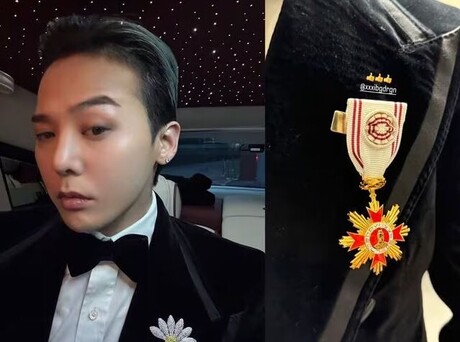Korean animator Ahn Jae-huun has spent over three decades developing a distinctly Korean approach to animation, using traditional hand-drawn techniques to tell stories rooted in his country's landscapes and literature. At 56, the veteran animator continues to draw every frame by hand on paper before his staff digitizes the work, a painstaking process that sets his studio Meditation With a Pencil apart in an industry dominated by Japanese anime and Hollywood productions.
Ahn's dedication to Korean storytelling reached international recognition with his 2020 feature "The Shaman Sorceress," which won a special jury prize at the prestigious Annecy International Animation Film Festival. The achievement came after years of adapting Korean classical literature into animation, including his breakthrough work "Green Days," which took a decade to complete and reconstructed the visual textures of 1970s and 1980s Korea. His latest project, "Gill," a fairy-tale about a boy who develops gills after being thrown into water, premiered at Annecy last year and awaits its Korean release.
Speaking as a juror at the Sharjah Film Festival in the United Arab Emirates, Ahn explained his philosophical approach to animation and cultural responsibility. "There were two paths, to quote Robert Frost's poem," he said when asked about his focus on Korean classical literature. "One that everyone takes, where content reaches its goals and makes money. The other is the road less traveled. Adapting Korean classical literature into animation was definitely the road not taken."
Ahn acknowledges that his choice isn't commercially smart, but he feels a deep obligation to Korean society. As the first animator to receive a Korean Film Council grant, he believes he owes something back to his country. "Korean animation missed a crucial period," he explained. "From the 1900s to the early 2000s, when global content industries were taking off, we were stuck doing outsourcing work for American and Japanese studios. I wanted to fill that gap with these works, to connect the dots."
The animator's commitment to hand-drawn techniques stems from both personal preference and strategic thinking. "When I was young, I just loved paper and pencil. But later it became more strategic," he said. "We don't have Hollywood's capital or the history and diversity of Japanese anime. So what can we offer that's unique? Craftsmanship is what others judge. Sincerity is what I can judge in myself – my own hard work. I figured the best way to show sincerity was to draw every frame by hand."
Ahn believes that 2D animation allows directors to infuse their personal sensibility directly into the timing and movement of their work. "Japanese animators each have distinct rhythms because they came up through 2D. Same with American animation," he noted. "When you start with 2D, a country's animation develops its own qualities. With 3D, it becomes more capital-driven, and everything starts looking the same."
Despite his traditional approach, Ahn is gradually embracing collaboration and new projects. His recent work shows increased input from his staff, who even provided character designs for "Gill." He's also taking on "A Better Tomorrow," a remake of John Woo's action film, which represents a departure from his usual literary adaptations. "Taking on 'A Better Tomorrow' felt like stripping away that [K-pop, K-drama] label and doing something that could move all of Asia," he explained.
The project aims to reach older Koreans who loved Hong Kong cinema in the 1980s and 1990s but have no memory of Korean animation. "If we bring them something like 'A Better Tomorrow,' maybe we can create a new memory and expand who can connect with Korean animation," Ahn said.
Regarding Korean animation's struggle for recognition, Ahn points to the lack of consistent leadership in the industry. "When foreigners think of Japanese animation, they immediately think of Studio Ghibli, of Makoto Shinkai. There's an impression, a distinct identity. Korea didn't have that," he observed. "For a country's animation industry to thrive, young animators need clear choices. They need to be able to say: I want to work at this studio because of that director's philosophy and visual style. Korea never had that continuity – no director stuck around long enough."
Some animators now working at his studio cite "Green Days" as their inspiration to pursue similar storytelling aesthetics. Ahn emphasizes the importance of commitment to his staff and the sacred nature of their shared work. "If I'd wavered or changed my attitude, the staff would have no reason to work with me," he said. "At the studio's anniversary recently, I told my staff they're the only people I'd want at my funeral. They've worked with me, worried with me, helped draw Korea's landscapes."
Even as artificial intelligence transforms the animation industry, Ahn sees opportunity rather than threat. His team has been experimenting with AI tools for six to eight months, finding that work that once took two weeks can now be completed in a day. "A character that took two weeks to draw and revise now takes a day, and the satisfaction is incredibly high," he noted. However, he maintains that human control over movement and direction remains crucial. "The feel of a person going into the movement is crucial," he emphasized.
Looking ahead, Ahn is shifting focus toward what he calls "family films" – works that can speak to multiple generations simultaneously. "A song for children, philosophy for young adults, a life story for the elderly. That's what family films should be," he explained. "I can't make everyone come see my films, but I want people who do come to remember them for years to come. I want to make at least one more like that before I'm done."































